Bananas are a popular and versatile fruit enjoyed by many people worldwide. They can be eaten on their own, used as a topping for cereals, blended into smoothies, or even incorporated into baking recipes such as breads, muffins, and cakes.
One common issue that arises is finding the perfect time to enjoy these yellow fruits when they have reached the desired level of ripeness.
Unripe bananas have a slightly green hue and harder texture, while overripe ones may start to turn black and become too mushy. Fortunately, there are several methods to help speed up the ripening process to get your bananas ready to eat or use in your favorite recipes.

There are a few simple techniques that can help bananas reach their perfect level of ripeness in a shorter amount of time. Understanding the science behind the ripening process is essential to mastering these methods.
One key factor is ethylene gas, a natural substance released by bananas during the ripening process. This gas works to break down the structural components of the fruit, making it softer and sweeter. By controlling the ethylene gas exposure, one can fast-track the ripening process of bananas.
In this article, we will discuss several reliable ways to ripen bananas quickly, so you no longer have to wait days to enjoy your favorite banana-based foods. These methods are easy to implement in any kitchen and will help you save time and ensure the perfect level of sweetness for your bananas.
Related: How to Store Bananas to Prevent Fruit Flies: Expert Tips and Techniques
Understanding ripening process
Bananas, like many fruits, undergo a natural ripening process that transforms them from an unripe, green state to a ripe, yellow state. This process involves a series of biochemical changes within the fruit.
A key component of the ripening process is the release of ethylene gas. Ethylene is a hormone produced by the fruit itself that triggers the breakdown of starch into simple sugars, softening the fruit’s texture. As bananas ripen, their starch content decreases, and their sugar content increases, giving them a sweeter taste.
To hasten the ripening process in bananas, one can manipulate the ethylene gas in their surroundings. One common method is to place unripe bananas in a closed environment, such as a paper bag or a plastic container, to concentrate the ethylene gas they emit. This accelerates the ripening process, making them ripe and ready to eat in a shorter time.
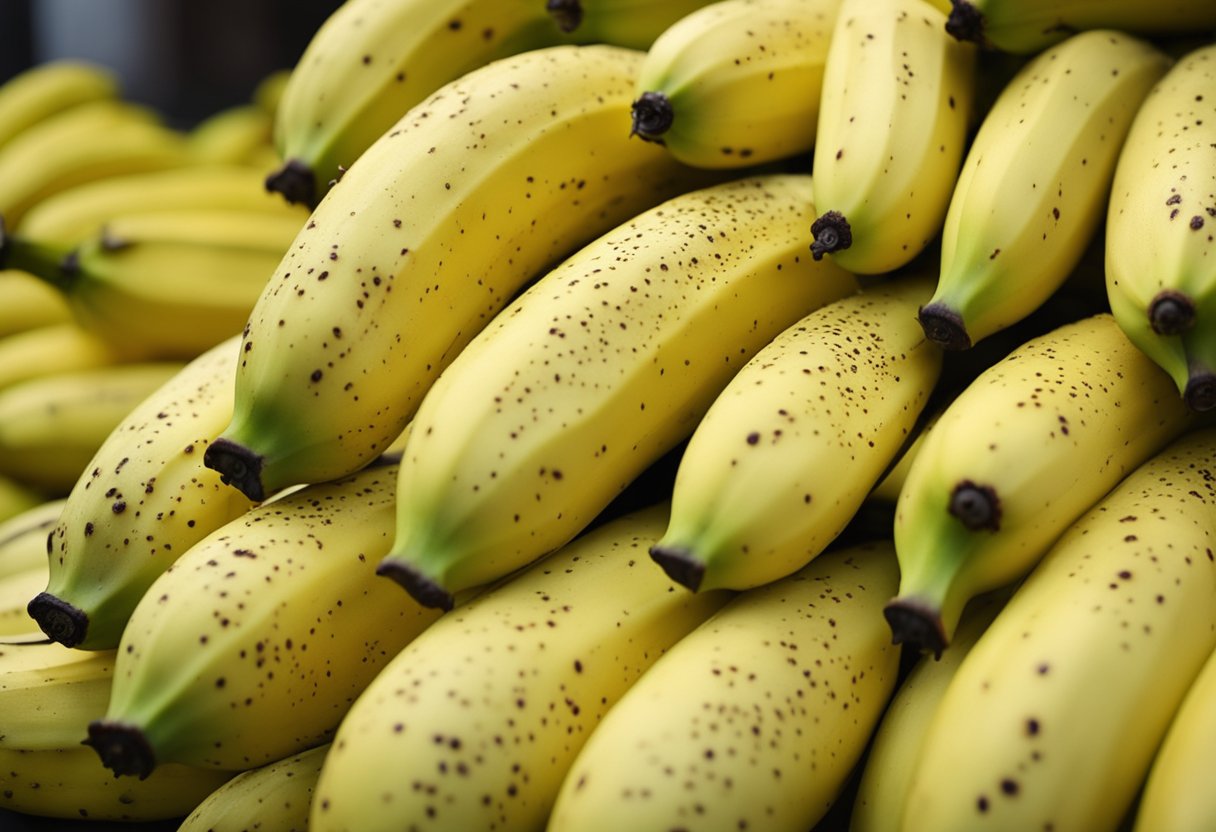
Temperature also plays a role in the ripening process. By exposing bananas to warmer temperatures, the rate of ethylene production and subsequent ripening will increase. Conversely, cooler temperatures slow down the process.
Another factor to consider is the proximity to other fruits that also produce ethylene gas. When bananas are placed near other ethylene-producing fruits like apples or tomatoes, the concentrated ethylene gas will speed up the ripening process for all the fruits involved.
In summary, understanding the role of ethylene gas in the ripening process and manipulating the environment of bananas can help speed up their transition from an unripe to a ripe state. By controlling the temperature and exposure to ethylene gas, one can enjoy perfectly ripe bananas in a shorter time.
Related: Fresh Banana Syrup (for Breakfast, Dessert, or Drinks!)
Factors influencing bananas ripening
Bananas undergo a natural ripening process involving the production of ethylene gas, which contributes to the softening and sweetening of the fruit. Several factors can influence the speed at which bananas ripen, and understanding these factors can help you manage the ripening process more effectively.
Temperature plays a crucial role in the ripening of bananas. Generally, bananas ripen faster at higher temperatures and slower at lower temperatures. Keeping bananas at room temperature is the most common practice for allowing them to ripen at a moderate pace.
However, if you want to speed up the ripening process, placing bananas in a warmer spot, such as near a sunny window or close to a heat source, can induce faster ripening. On the other hand, if you want to slow down ripening, storing bananas in a cool area, like a basement or a garage, will do the trick.
The state of the bananas when you buy them also affects the ripening process. Green bananas are unripe and will take longer to ripen compared to more mature, yellow bananas.
To speed up the ripening of green bananas, you can place them in a paper bag or wrap them in newspaper, which traps the ethylene gas produced by the bananas, accelerating the ripening process. This method also works for ripe bananas if you want them to become even softer and sweeter.
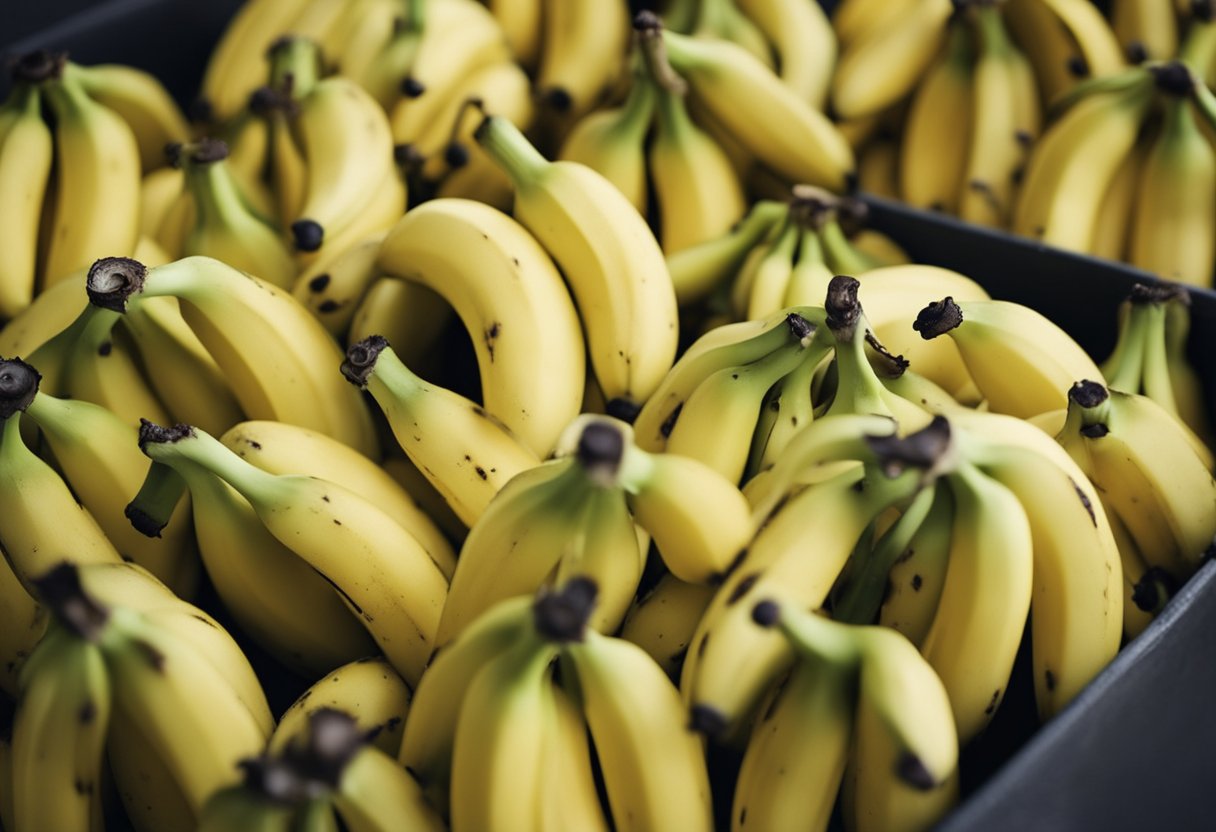
Storing bananas with other fruits that produce ethylene gas, such as apples and avocados, can also expedite the ripening process. The additional ethylene released by these fruits will help bananas ripen more quickly. However, it’s essential to keep an eye on the ripening process and avoid over-ripening, which can lead to mushy, over-sweet bananas.
When it comes to slowing down the ripening process, the refrigerator can be a helpful tool. Once bananas have reached the desired ripeness, placing them in the fridge can help maintain that level of ripeness for a longer period of time.
The cold temperature of the refrigerator slows down the ethylene production, thus slowing down the ripening process. It’s important to note that the banana peel may turn brown or black in the fridge, but the fruit inside will still be fresh and delicious.
In conclusion, by understanding the factors influencing banana ripening, such as temperature, the initial state of the bananas, and the presence of other ethylene-producing fruits, you can better control the ripening process and enjoy perfectly ripened bananas at your convenience.
Methods to ripen bananas quickly
Bananas can be ripened quickly using various methods that take advantage of their natural ethylene gas production. These methods include the use of an oven, paper bag, microwave, or pairing with other fruits such as apples or pears.
The Oven Method is a simple way to speed up the ripening process. Preheat your oven to 300 degrees F (150 degrees C) and line a baking sheet with silicone or parchment paper, as bananas may leak a little during baking.
Place unpeeled bananas on the baking sheet, leaving some space between them, and bake for about half an hour. Check every 15 minutes to see if they are soft enough 1. This method is ideal for people who want to use the bananas in baked goods.
Using a Brown Paper Bag can help trap the ethylene gas produced by bananas and speed up the ripening process. Simply place your bananas in a brown paper bag and roll down the top to seal it.
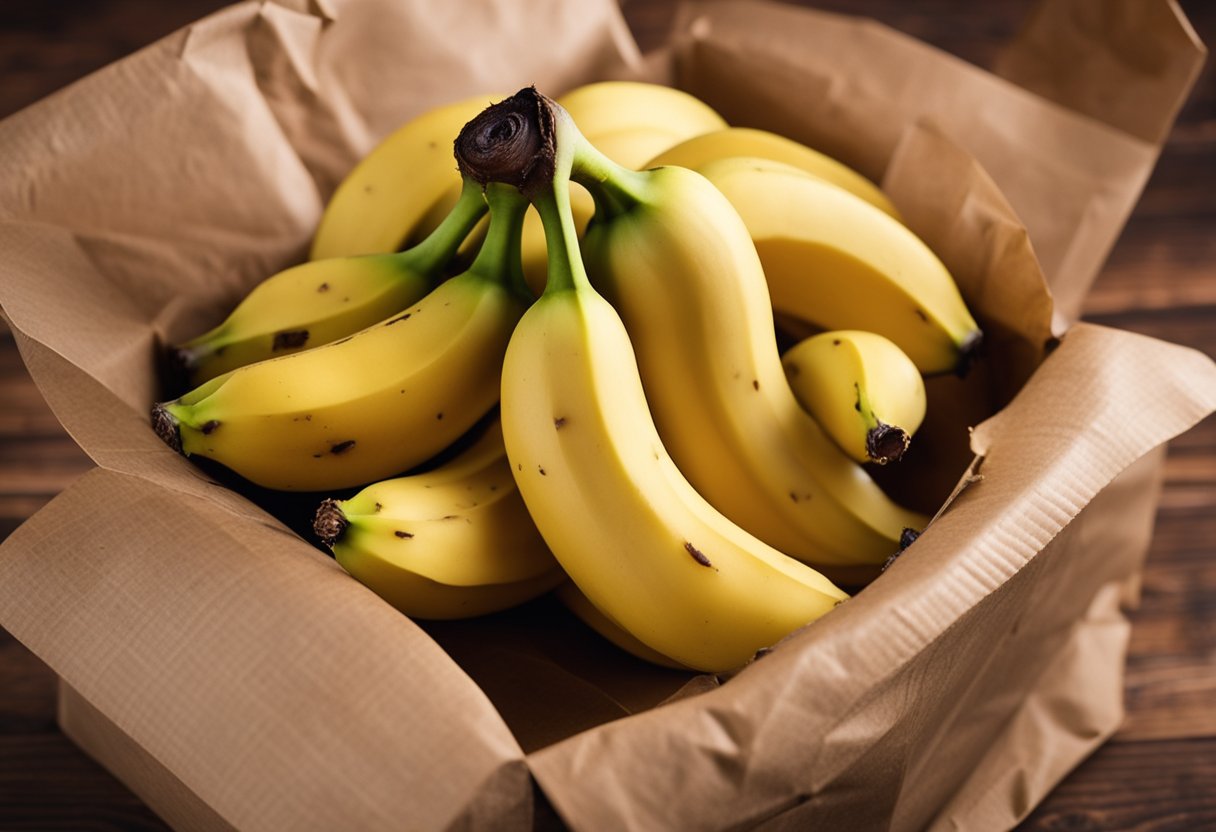
To further expedite the process, you can add an apple, pear or tomato to the bag as well, as these fruits also produce ethylene gas 2. Be sure to check the bananas after a day to see if they have reached your desired ripeness.
If you’re short on time, the Microwave Method is the quickest way to ripen bananas. Poke holes in unpeeled bananas with a fork or a small knife, place them on a microwave-safe plate, and microwave the bananas in 30-second increments until they reach your desired softness 3. This method is perfect for when you need ripe bananas in a matter of minutes.
When trying to ripen bananas quickly, understanding the different methods available can help you make the best decision according to your needs and resources. Whether it’s through the oven, paper bag, or microwave, these methods can easily accelerate the ripening process to give you sweet and soft bananas ready for consumption or baking.
How to store ripe bananas
Storing ripe bananas properly is essential to prolong their shelf life and maintain their taste and nutritional benefits. To do this, there are several options depending on the condition of the bananas and how quickly they will be consumed.
One common method is to store ripe bananas at room temperature. If the bananas are in a bunch, separate them individually to slow down the ripening process.
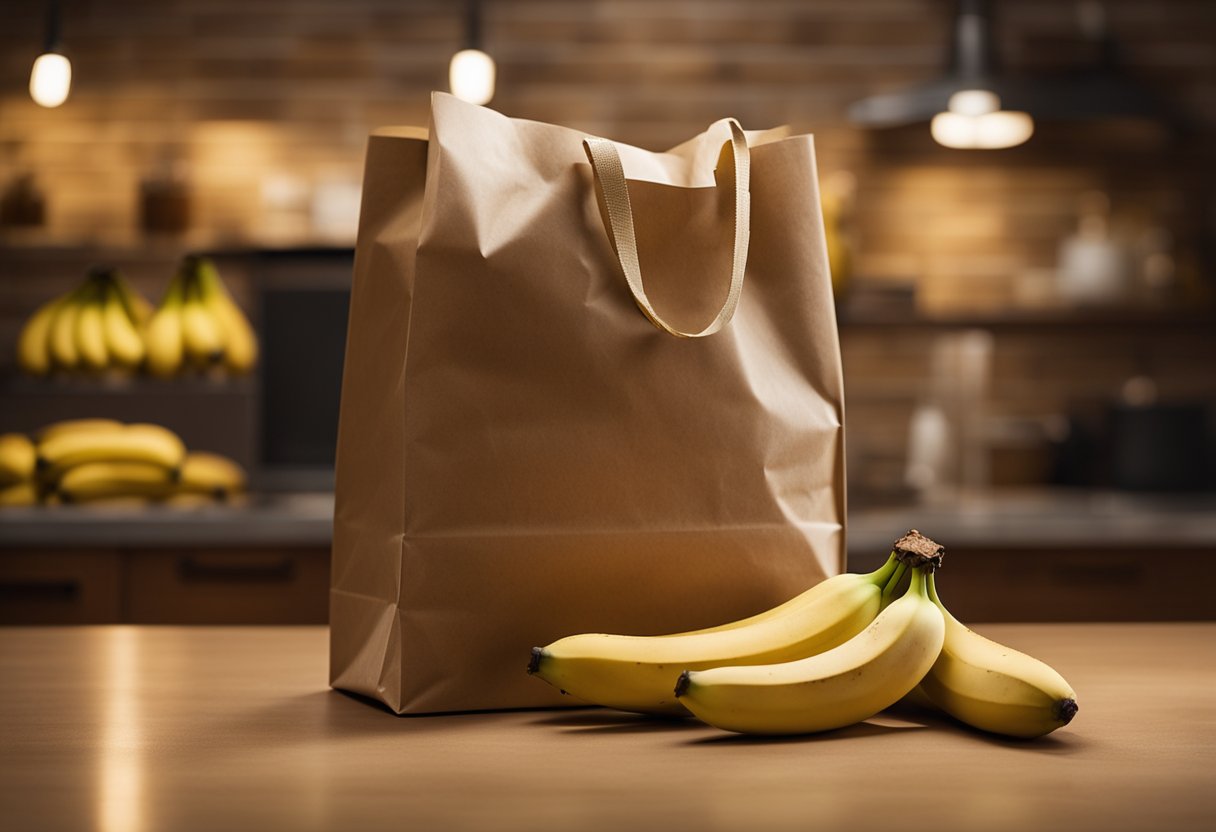
This will allow the bananas to last between 5 to 7 days. Keep the bananas away from other fruits, as they produce ethylene gas, which speeds up ripening.
If the aim is to preserve the ripe bananas for a longer period, consider storing them in the refrigerator. The cold temperature will slow down the ripening process, and the bananas can last up to two weeks. While the peel may turn black, the inside will remain fresh and firm.
For those who want to store ripe bananas for an extended period, the best option is to freeze them. Peel the bananas and cut them into smaller pieces for easier use later on.
Place the pieces in a sealed freezer bag or an airtight container and store them in the freezer. Frozen bananas can be stored for several months and are ideal for use in smoothies, baked goods, or as a quick, cold snack.
Additionally, it’s important to remember that bananas should not be stored near other fruits or vegetables, as the ethylene gas they release will cause the nearby produce to ripen and spoil more quickly.
Using ripened bananas in recipes
Ripened bananas are incredibly versatile and can be used in a variety of delicious recipes. One popular option is using them in banana bread, which showcases the natural sweetness and moist texture of overripe bananas.

Similarly, banana muffins are another delightful baked good, perfect for enjoying as a breakfast or snack. To make these recipes, simply preheat your oven, prepare your baking sheet, and follow the instructions for the specific dish.
Another delectable way to use ripened bananas is by incorporating them into dessert recipes like banana pudding or the classic banana cream pie. These creamy, rich desserts make excellent use of the natural sweetness and smoothness of overripe bananas, creating a luscious and satisfying treat.
Bananas can also be added to cakes, bringing moisture and a hint of fruity flavor to a variety of flavors and types of cakes. Their natural sweetness can often help reduce the amount of sugar required in these recipes.
For those looking for lighter, healthier options, ripe bananas are a fantastic addition to your breakfast routine. Blend them into smoothies for an extra burst of natural sweetness and a creamy texture.
Alternatively, use them in pancakes and bread pudding recipes. Incorporating mashed or sliced bananas into these dishes will provide a pleasant sweetness that allows you to cut back on added sugars while still enjoying a tasty treat.
In conclusion, ripe bananas are a valuable ingredient in numerous baked goods and other recipes. From classic dishes like banana bread and banana cream pie to healthier options like smoothies and pancakes, overripe bananas can enhance and transform your cooking, providing natural sweetness and a delightful texture.
Health benefits of eating ripe bananas
Ripe bananas are a tasty and nutritious fruit that offers numerous health benefits.
Eating ripe bananas can provide the body with essential nutrients such as potassium, which is crucial for maintaining healthy blood pressure and proper muscle function. Additionally, ripe bananas are an excellent source of dietary fiber, helping to support a healthy digestive system.

As a convenient and portable snack, bananas are a great addition to any diet. They are naturally sweet, making them a healthy alternative to processed, sugar-filled treats. Moreover, their high potassium content can help offset the negative effects of sodium, contributing to improved cardiovascular health.
Bananas are also rich in various vitamins and minerals, such as vitamin C, vitamin B-6, and manganese. These nutrients serve vital roles in supporting the immune system, brain function, and skin health. In particular, vitamin B-6 is known for its role in synthesizing neurotransmitters that are essential for mood regulation and cognitive function.
Finally, ripe bananas contain antioxidant compounds that can help neutralize free radicals in the body. These free radicals can cause cellular damage, leading to various age-related diseases and health problems. By including ripe bananas in one’s diet, individuals can enjoy the fruit’s numerous health benefits while promoting overall well-being.
How to choose bananas at the grocery store
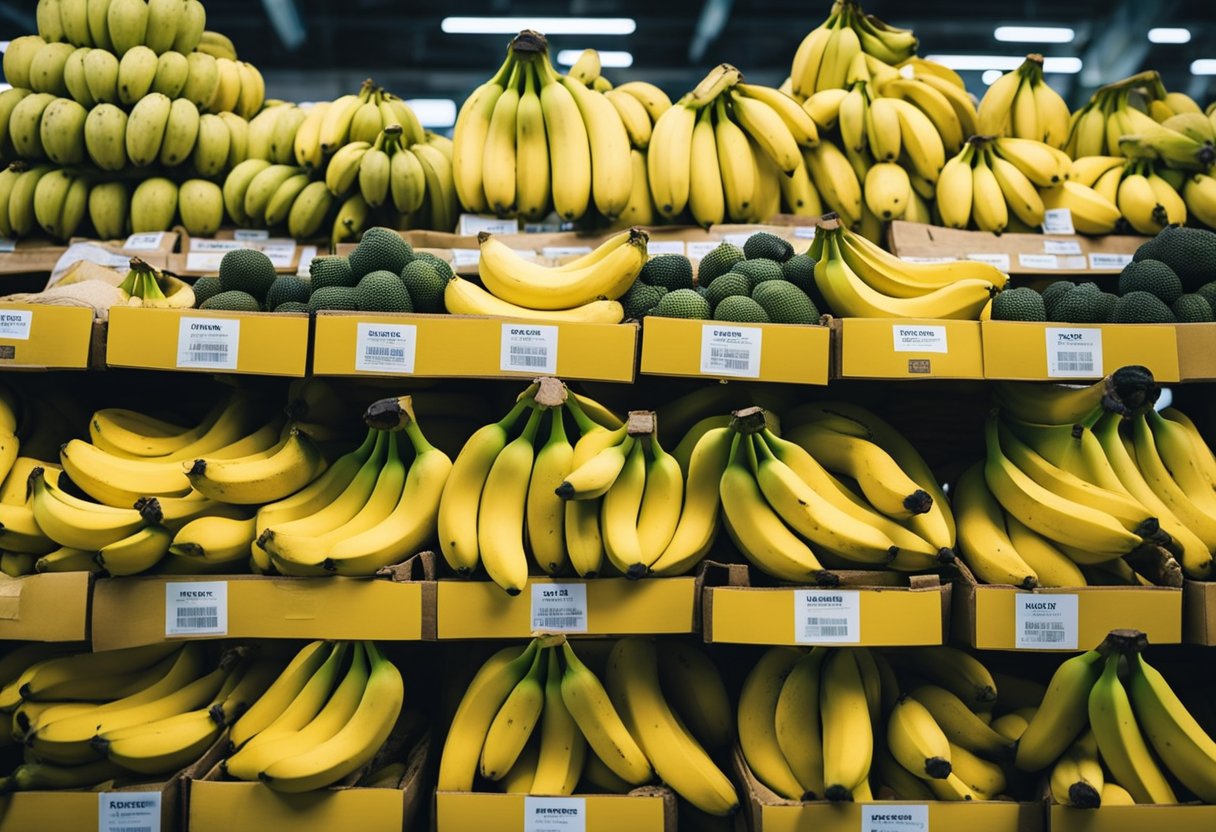
When shopping for bananas at the grocery store, it’s essential to know how to select the best ones according to their ripeness. A confident and knowledgeable approach to selecting bananas will ensure a more enjoyable eating experience and avoid unnecessary waste.
To find ripe bananas, look for those with a bright yellow skin, avoiding green patches or brown spots. The even coloration indicates a perfect level of ripeness for immediate consumption. Gently squeeze the banana to check its firmness, selecting ones that are neither too hard nor too soft.
In contrast, if you require bananas to last for a few more days, opt for slightly green bananas. Although unripe, they will naturally ripen over time, allowing them to be consumed at a later date without becoming overripe and mushy.
Keep in mind that the size of the bananas can also make a difference in your selection, as larger bananas tend to ripen more slowly than smaller ones. Moreover, pay attention to the bananas’ stems, as they should be firmly attached and without any signs of mold or fraying.
Lastly, always try to choose bananas that are individually available rather than prepackaged in plastic bags, as this allows for better air circulation and helps maintain the fruit’s freshness longer with less chance of bruising or rotting.
By following these clear and neutral guidelines, you can confidently select the best bananas for your needs, ensuring optimal ripeness and quality when it’s time to enjoy them.
Tips and tricks for quick banana ripening
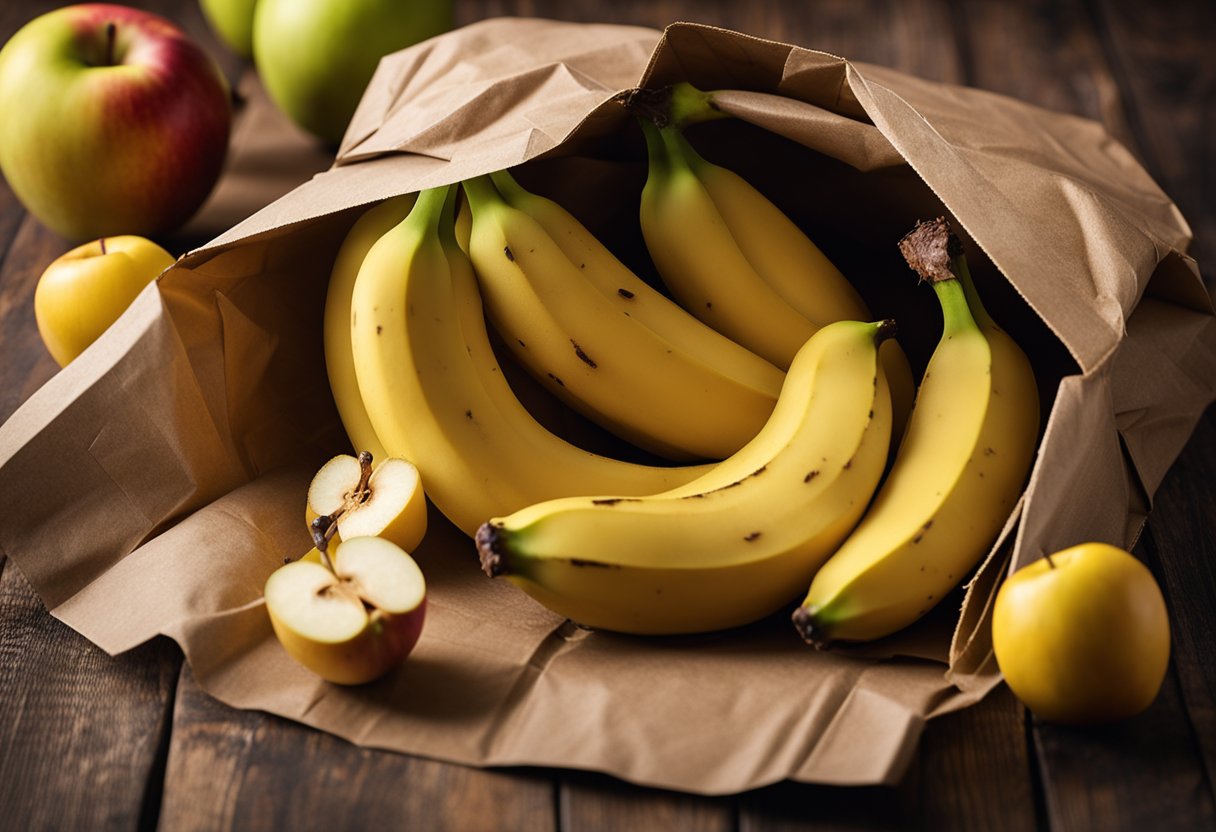
Bananas are a popular fruit, loved for their natural sweetness and versatility in recipes. Sometimes, you may find yourself with unripe bananas when you need ripe ones for a recipe or to enjoy as a snack. Here are some tips and tricks to quickly ripen bananas, so they are ready to eat or use in your favorite dishes.
The Paper Bag Method: One of the easiest ways to ripen bananas quickly is to place them in a paper bag along with an apple, tomato or other ethylene-producing fruit. Ethylene is a gas released by these fruits that speeds up the ripening process. Close the bag and keep it in a warm place. Usually, the bananas will ripen within 1 to 2 days using this method.
The Oven Method: If you need your bananas to ripen even faster, you can try the oven baking method. Set your oven to 300°F and line a baking sheet with parchment paper.
Place unpeeled bananas on the baking sheet, and bake for 15-20 minutes until their skins turn black. This process will produce sweet, soft banana flesh perfect for baked goods.
The Microwave Method: For an almost instant ripening solution, use the microwave method. Carefully pierce an unpeeled banana all over using a fork or toothpick.
Place the banana in the microwave and heat for 30 seconds. Check the banana’s softness and, if needed, repeat the process until it reaches the desired ripeness.
The Freezer Method: If you’re not in a hurry but still want to ripen bananas quickly, try the freezer method. Put unpeeled bananas in a sealable plastic bag and freeze them until their peels turn black. Then, move the bananas to the refrigerator to defrost.
Each of these methods has its benefits and drawbacks, so choose the one that best fits your needs and schedule. With a little creativity and patience, you can have perfectly ripe bananas in no time, ready to be enjoyed on their own or in your favorite recipes.
Understanding common issues with ripening bananas
Ripening bananas can sometimes be a tricky process, as various factors can affect their journey from unripe to overripe.
One common issue is when bananas become mushy due to overripeness, which can occur if they are left to ripen for too long or are exposed to excessive heat. On the other hand, unripe bananas can be quite hard and taste less sweet, which is not ideal for consumption or use in recipes like banana bread.
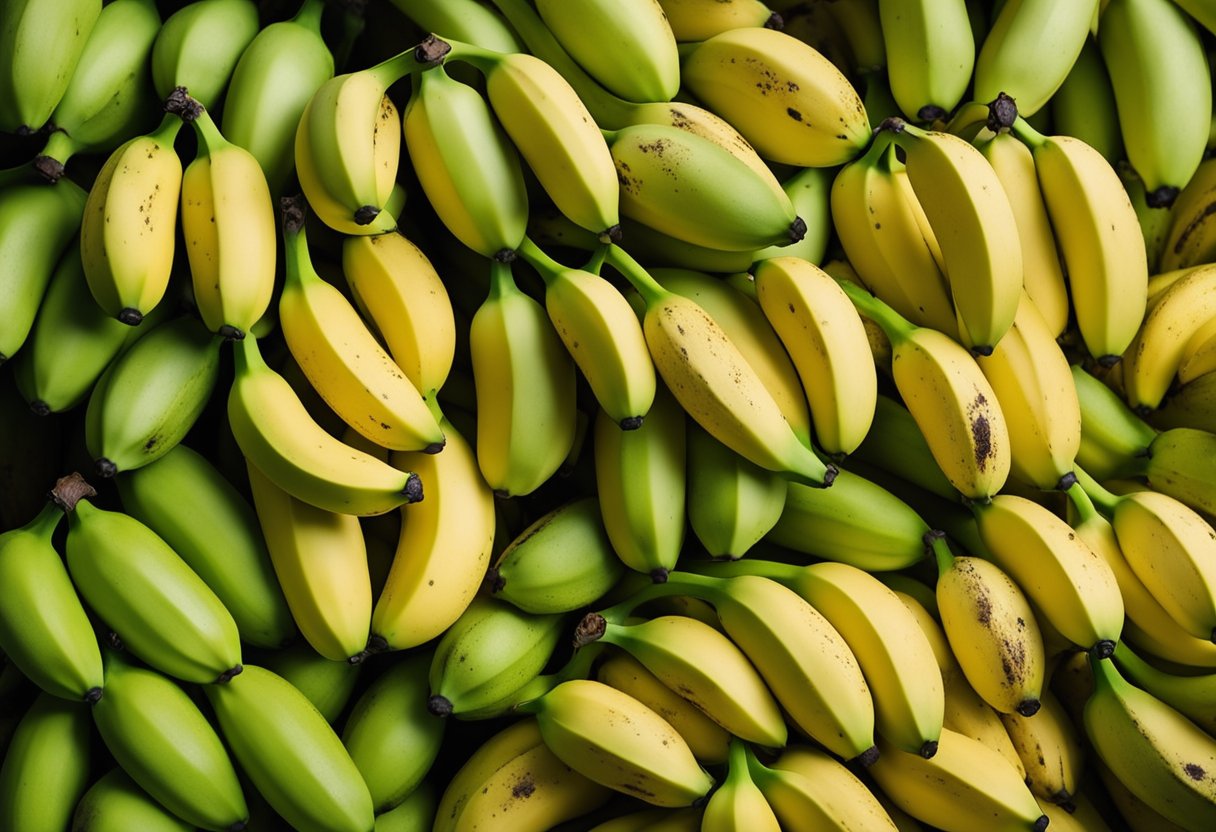
Like avocados and peaches, bananas emit ethylene gas, which plays a significant role in the ripening process. This gas can help speed up ripening for bananas themselves and other nearby fruits. Since ethylene gas is crucial for ripening, controlling its emission around bananas can help manage their ripening process.
The external environment, such as temperature and humidity, can also impact the rate of ripening. Bananas tend to ripen faster when stored at room temperature (around 68°F or 20°C) and slower at cooler temperatures.
Keep in mind that placing bananas in the refrigerator can slow down the ripening process but might result in a change of texture and brownish skin. However, the interior flesh remains unaffected and can still be consumed.
Understanding these factors helps in preventing issues like mushy or overripe bananas and unripe ones, ensuring that you can enjoy the fruit at its optimal stage. It allows you to control the process and ensure that your bananas stay fresh and delicious for an extended period.
Additionally, mastering the art of ripening bananas can assist with other ethylene gas-sensitive fruits, such as avocados and peaches. With a few simple techniques, you can manage the ripening process and avoid common problems for a better-tasting, more enjoyable experience.
